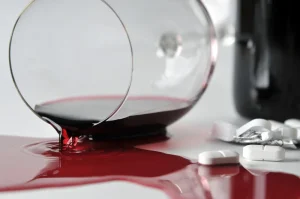While men used to drink more, studies over the past several years show that gap is closing. “I think this is an important study to do because for a while, people thought that alcohol was protective against the heart because of earlier studies that were done in the past. Such findings highlight the importance of universal screening and brief intervention for alcohol use by pregnant women as recommended by the US Preventive Services Task Force (2018). Similarly, a beer or two can, at least temporarily, help you tolerate a day on which day care is closed, work is nuts, your husband is playing video games, and an elderly relative is having a health scare. But what if you didn’t need the alcohol, because child care was ubiquitous and affordable, health care was cheap, and gender norms were more balanced?
The link between alcohol and coronary heart disease proved to be especially strong among women, the data showed. Thus, consideration of other ways that disparities in alcohol-related problems can arise is needed. Recent research calls attention to potential explanations involving the life course, differential vulnerability, and access to care. As noted earlier, this review reflects a predominant focus in the literature on racial/ethnic and socioeconomic disparities. Future studies are needed to assess relevance to other disadvantaged social groups. Mukhti Shanker, 25, used to drink groundwater from a tube well regularly before she had her baby.
Ethnicity And Female Alcoholism
„For us to address issues with alcohol, we also need to address these pervasive issues with mental health,“ White says. Dr. Schneekloth points to a study done on men that found that about 42% were depressed when they women and alcoholism started alcohol treatment. After four weeks, their depression rate dropped down to 6% — without the use of any antidepressants. For most of these men, alcohol appeared to be the primary cause of their depression.
In the treatment program, she saw other women in their 20s struggling with alcohol and other drugs. „It was the first time in a very long time that I had not felt alone,“ she says. Khan conducted a second study in 2011 with Imperial College London and the Bangladesh Centre for Advanced Studies, which found the salt intake among women in Dacope was well above the World Health Organization’s recommended levels. It confirmed a strong relationship between salt intake and the risk of developing pre-eclampsia and hypertension. Alarming numbers of pregnant women in the coastal district of Dacope, in south-west Bangladesh, have been diagnosed with pre-eclampsia, eclampsia and hypertension.
Alcohol Use Among Women
And women who binge drink — three alcoholic beverages per day — were 68 percent more likely to develop coronary heart disease than those who drink in moderation, the research showed. Although this review focuses on sexual minority women, the newly emerging literature on alcohol use among gender minority women (i.e., noncisgender and nonbinary women) should be noted. As noted by Gilbert and colleagues, to facilitate research on alcohol use disparities among gender minority women and transgender individuals, new methods will be needed, as many of the current alcohol use measures to assess unsafe drinking rely on physiological sex-specific cut points. In this article, sexual minority women, including bisexual women and lesbians, are defined based on sexual orientation. Bisexual women were most likely to report alcohol problems, with 70% reporting lifetime problems in contrast to 29% of heterosexual women. Identifying racial/ethnic and socioeconomic disparities in alcohol-related problems is not always a straightforward task, partly because of differential abstinence rates across racial/ethnic and socioeconomic groups.

These may be more helpful than mixed-gender programs for some women, such as those who have suffered sexual or physical abuse. Trends suggest that white, employed women are drinking greater amounts of alcohol and with greater frequency. Some of this increase may reflect a greater comfort on the part of women to discuss their drinking. If you suspect that you or someone you know may have a drinking problem, consult with a health care provider.
Alcohol Treatment Services for Women
This is a major problem considering substance use can mirror or mask the symptoms of a mental health disorder. Historically, men have a higher reported rate of substance misuse, abuse and dependence, but women are rapidly closing the gap. Today young and middle-aged women are addicted to alcohol and other drugs at nearly the same rates as men. While definitions of binge drinking vary, in this study, it was defined as having more than three drinks a day for women and more than four for men.

The study — presented at the American College of Cardiology’s Annual Scientific Session April 6–8 — also found men with a high intake of alcohol also had an increased risk of developing coronary heart disease. „Progesterone has metabolites (products of progesterone metabolism) that interact with brain circuitry the same way alcohol does,“ she says. For women in particular, https://ecosoberhouse.com/article/is-alcohol-good-for-you-benefits-and-risks/ the line between healthful and harmful drinking is easy to cross. Because of body composition and other factors, women achieve a higher blood level of alcohol for each drink compared to men. This means women can become intoxicated faster and maintain blood alcohol levels longer, all which can lead to an increased risk for developing long-term health problems.






